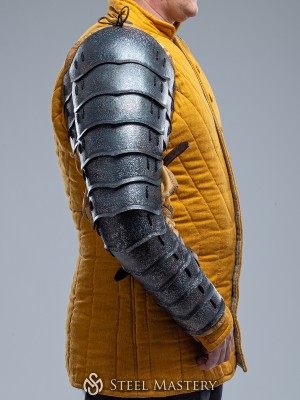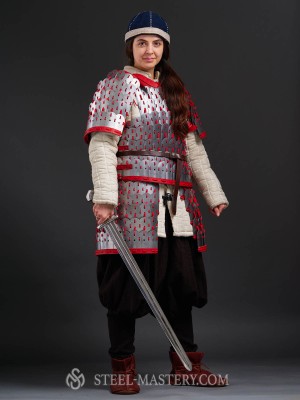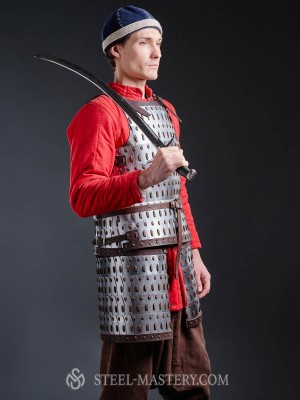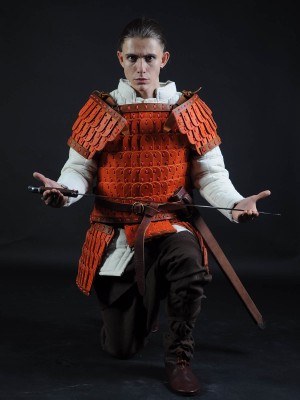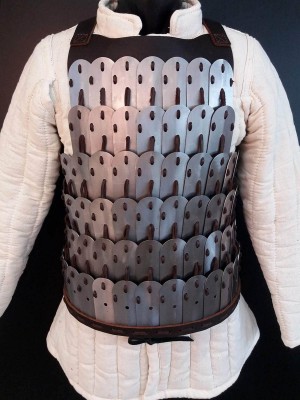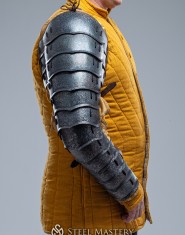About Lamellar body protection
Welcome to section, that represents lamellar body armour. Here you can see different models of plated protection, which were used in medieval Europe, Byzantium and Ancient Rus.
Every piece of armour is handcrafted by individual parameters of customer. We make lamellar armour according to the original models, which are kept in museum collection and shown in the old manuscripts.
To order such reliable armour, you need to do few simple actions:
1. Open the link of the wished item;
2. Choose type and thickness of metal or colour of leather for plates;
3. Select type of cord – synthetic or leather one;
4. Define method of finish treatment (satin/mirror polishing or blueing);
5. Add skirt and/or spaulders, if you need additional body protection;
6. Choose metal for buckles (steel or brass);
Please contact our manager, if you have any problems with choosing. We will help you to define size, model and complement.
All models of lamellar armour are perfect for participation in the tournaments of medieval fencing, historical festivals, bohurts and reenactment events. Depending on the complement, such defense is compliant to the standards and rules of such social movements, as SCA (The Society for Creative Anachronism), HEMA (Historical European Martial Arts), HMB (Historical medieval battles).
If you did not find required element of defense in this section, we can make it individually for you. Just send us picture/pattern with detailed description to [email protected], and then we will quote you and discuss details of order.
“Lamellatus” means “plated” or “laminar” in Latin. Separate parts of lamellar armour were linked together in horizontal rows. After this, crafters were making sleeveless jacket of these rows. Armour had belts with buckles on the sides for good fitting on body.
Lamellar armour had typical feature: elements of the first row were overlapping lower row by one third or quarter. Lamellar cuirass was often complemented with spaulders and tassets (skirt). These additional details were also assembled of similar lamellas (sometimes elongated a little) and were tied to the body part of armour with leather strings.
Material, size and shape of lamellar plates had peculiar features in every provinces. Way of plates’ linking with cord or rope was general one for every model. Lamellar body protection was widespread among warriors of different countries: from Mesopotamia and Ancient Egypt to the Northern Europe and Asia. Nomad tribes, Byzantine soldiers, Ruthenian and Vikings were wearing such body defense. Lamellar armour was in wide use over the centuries, starting from I century A.D. until XIV century.
Such popularity could be explained by few factors. First of all, different source raw materials were used for lamellar plates, depending on the region: iron, steel, horn, wood or leather. Due to movable joints, such armour did not hinder the movements. Fighter could comfortably ride, turn in the saddle, run and bend down.
Besides, process of manufacture was easy enough. It was making lamellar armour inexpensive and rather affordable. Important advantage of such body defense was a possibility of quick repair. Defective bent plates or rubbed leather belt could be easily replaced, if necessary. So, service life of body armour was essentially extended.

